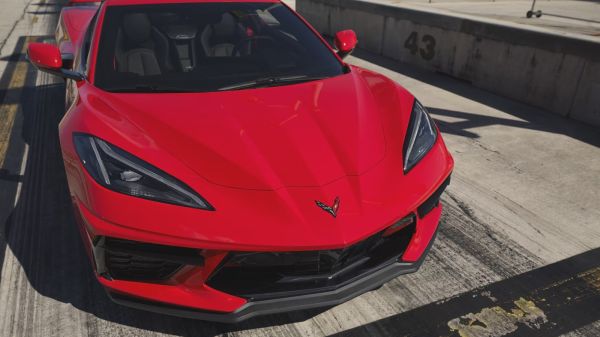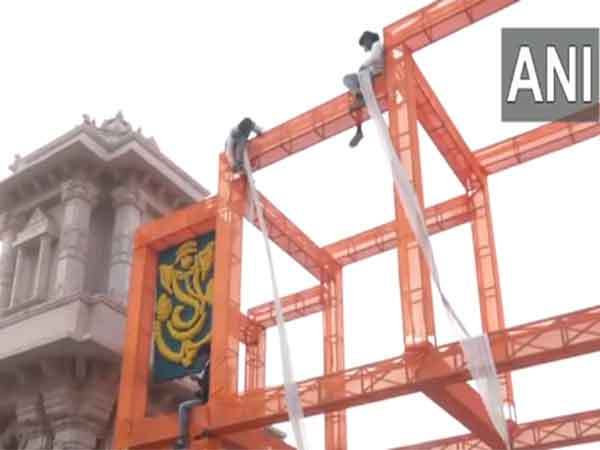It’s no secret that Asian countries dominate the car manufacturing industry. As of 2023, China leads the way, making more than 30 million cars and commercial vehicles that year alone. Japan and India aren’t too far behind, either, having built nine and 5.8 million vehicles that year, respectively.
Advertisement
In 2023, the United States produced over 10 million vehicles — and that certainly isn’t anything to scoff at. That said, it’s worth noting that there were 15.5 million cars sold in the U.S. that year. So, there is obviously a good chunk of cars on dealer forecourts that are built in other countries. And while we don’t think there’s anything inherently wrong with that, we understand that some customers may prefer to buy American-made — and that’s where this list comes into the picture.
This roundup is a quick peek into some of the vehicles — cars, trucks, and SUVs — that you can buy in 2025 which will have come out of a factory somewhere in the U.S. Now, to be clear, this isn’t a list of only American brands; many of the vehicles on this list are from international marques such as BMW, Honda, and Toyota. The main point here is that they build these particular vehicles in America.
Advertisement
Ford F-150
Ford’s F-150 is as American as they come, with the signature pickup topping sales charts for just about 50 years now. So it’s probably not going to be a big surprise to find out that the Blue Oval still builds the F-150 in the U.S. It’s not just select versions, either. Unlike some other manufacturers — looking at you, Subaru — Ford’s entire range of F-150 trucks is American-made, including higher-end models like the 2024 F-150 Raptor R and Tremor.
Advertisement
The gas-powered F-150s come out of one of two manufacturing plants. The first is in Dearborn, Michigan, the same city where Ford has its headquarters, while the other is in Claycomo, Missouri, just outside Kansas City. Ford builds more than half a million F-150 pickups between these two plants, with a staggering 750,789 units across 2023. It’s no surprise, then, that the F-150 and its production is a significant contributor to the U.S. economy — 500,000 jobs and $42 billion in annual revenue, as of 2020.
Now, to be clear, American-made doesn’t mean that all the F-150’s constituent parts come from the U.S. or U.S.-based suppliers. Only about 50% of the F-150’s components come from North America, although this admittedly includes some of the more attention-grabbing parts: F-150 engines like the 5.0-liter V8 and 3.3-liter V6 are American-made, as is the 10-speed transmission.
Advertisement
Ford F-150 Lightning
With the internal combustion F-150 being a fully American-assembled vehicle, you’d expect that the company’s EV version, the F-150 Lightning, would follow in its footsteps. And it does, although Ford uses a completely different facility to build the 580-hp, 775-lb-ft electrified pickup truck.
Advertisement
Ford builds the F-150 Lightning in its Rouge Electric Vehicle Center, which it opened in Dearborn, Michigan, in 2021. The Ford F-150 Lightning is currently the only vehicle the company builds on the 12-acre site (we expect at least one of the three upcoming Ford EVs will be built there there, if not all three). The F-150 Lightning has had a checkered manufacturing history, for good and bad reasons. Ford had to stop taking orders for the truck in 2023 due to high demand but has also had to reduce and stop production altogether a few times since it began building the electric pickup in April 2022. Battery issues caused a roughly two-week halt in production, while poor sales prompted the company to cut production to 1,600 units weekly at the end of 2023.
Advertisement
Most recently, Ford announced in November 2024 that it would temporarily cease F-150 Lightning production until January 6, 2025. While Ford didn’t announce the reasons for this halt, it’s not hard to hypothesize that the truck’s somewhat inaccessible pricing — even after price cuts — has resulted in poor sales and unsold inventory.
Rivian R1T
Ford isn’t the only company building an all-electric EV in America. California-based Rivian also makes its R1T in the U.S. More specifically, the automaker builds the R1T in Normal, Illinois, the same facility where it makes the R1S and its formerly Amazon-exclusive electric delivery van.
Advertisement
Rivian R1T production began in September 2021, a few months before the company’s R1S and well ahead of other electric pickup rivals — earning the company the bragging rights as the first automaker to bring an electric pickup truck to market. Rivian’s Normal facility houses everything it needs to build its vehicles, with a body shop, drivetrain assembly, general assembly lines, and vehicle testing facilities all present.
The R1T comes in four versions: Dual Standard, Dual, Tri, and Quad, and all four versions come out of the Normal facility. We tested the 2024 Rivian R1T Dual and enjoyed it enough to give it an Editor’s Choice award, with the truck’s great practicality and high-quality interior — well put together by Rivian’s American employees — impressing our reviewer. We also liked the dual-motor R1T’s power, of course, even if 533 hp and 610 lb-ft of torque pales compared to some of the crazy numbers available from the higher-end (and higher-priced) versions of the electric pickup.
Advertisement
Lucid Air
We’ve been talking about electric vehicles for the past couple of items, so we might as well continue with the third American-made EV to make it onto our list: the Lucid Air. Like Rivian, Lucid has its headquarters in California — more specifically, in Newark — but builds its vehicles elsewhere in America.
Advertisement
In Lucid’s case, it’s in Casa Grande, Arizona, between Phoenix and Tuscon. Lucid’s Casa Grande facility, Advanced Manufacturing Plant-1 (AMP-1), sits on 500 acres of land and, according to the company, is the first-ever purpose-built EV factory in North America. Lucid completed construction of the facility in December 2020, with the plant boasting an initial production capacity of 10,000 vehicles a year. That was merely the start, though: Lucid claimed it had room to expand AMP-1 in the future, possibly raising that number to an impressive 300,000 annually.
The Casa Grande facility initially focused exclusively on building the various Lucid Air models the company offers, including the Lucid Air Pure RWD and Lucid Air Sapphire — both of which are amazing EVs that earned their Read Editor’s Choice awards. Lucid hasn’t rested on its laurels, though, expanding AMP-1 by around 3 million square feet in 2024 to gear up for the 2025 Lucid Gravity SUV, which officially entered production in December 2024.
Advertisement
BMW X5
BMW’s X5 is one of the German brand’s most popular models, with the first-generation E53 earning a place in the pantheon of the most successful BMW vehicles ever. The X5 debuted in 1999 at the Detroit International Auto Show and, in doing so, marked a couple of firsts for the automaker: not only was the X5 the company’s first-ever crossover, but it was also the first mass-produced vehicle from BMW’s Spartanburg, South Carolina, plant.
Advertisement
Twenty-five years and more than a million units since, the Spartanburg plant continues to build X5s for the American and global markets. But the X5 isn’t the only car that BMW builds on its 8 million-square-foot facility: the automaker also builds the X3, X4, X6, X7, and XM there, with 60% of the vehicles produced in South Carolina exported to international markets.
As far as the X5 goes, it’s not hard to see why car buyers have taken to it like a duck to water. While the first generation wasn’t necessarily a home run, the generations since have gotten more technologically advanced, bigger, and even more comfortable, all of which have helped make it one of BMW’s best-selling models globally. Not that the X5 is all about crossover practicality and comfort, though: the 2024 BMW X5 M60i pushes the performance envelope with a 523-hp, 553 lb-ft V8 that we found especially addictive.
Advertisement
Mercedes-Benz GLE
BMW’s X5 may have been the company’s first mass-produced American-made vehicle, but BMW’s rival German automaker, Mercedes-Benz, pipped BMW to the post with its M-Class. The M-Class, known as the GLE since 2015, debuted in 1997 as a product of Mercedes-Benz U.S. International (MBUSI), located near Vance, Alabama, in the state’s Tuscaloosa County.
Advertisement
Mercedes-Benz started work on MBUSI in 1993, and the ML SUV was the first vehicle to roll off the completed production lines. As with the BMW X5, the Mercedes-Benz M-Class was the company’s first SUV. And, like its slightly younger BMW rival, the ML family of SUVs would prove popular with the buying public and is now recognized as one of Mercedes-Benz’ most successful models.
The German automaker continues to build the GLE in Alabama alongside the GLS SUV, GLE Coupe, and Mercedes-Maybach GLS. Mercedes-Benz offers an impressive selection of drivetrains for the GLE, with a plug-in hybrid model, the GLE 450e 4Matic, new for the U.S. market 2024 alongside reliable favorites like the six-cylinder, 429-hp 2024 Mercedes-Benz AMG GLE 53, which we enjoyed on a road trip back in April 2023.
Advertisement
Chevrolet Corvette
Chevrolet may have gone all fancy and European with its recent iterations of the beloved Corvette, moving to a mid-engined layout with the C8 Corvette, but the iconic sports car has held on to its staunchly American roots when it comes to manufacturing. As with all Corvettes since 1983’s C4, Chevrolet builds the C8 in its Bowling Green, Kentucky, facility, which it moved to from St. Louis, Missouri, in 1981.
Advertisement
Chevrolet’s Bowling Green plant is one of the more specialized facilities on our list, with the 1.7-million-square-foot factory building just one Chevrolet model: the Corvette. Workers in Bowling Green currently build the Corvette Singray, Corvette E-Ray, and Corvette Z06. The latter’s 670-hp V8 — one of the most powerful Chevrolet engines ever — also comes out of Bowling Green, with staff at the on-site Performance Build Center tasked with assembling each Chevrolet Z06 engine by hand.
The Z06 engine is something of a work of art, as we found out when we drove the 2023 Chevrolet Corvette Z06, but those of you who can’t afford to drop a six-figure sum on a sports car need not fret: even the entry-level 2024 Corvette Stingray is an excellent choice, impressing us with its performance, handling, and great value compared to European rivals during our review in 2024 — and earning a Read Editor’s Choice award in the process.
Advertisement
Honda Accord
If the Chevrolet Corvette is one of the most exciting American-built cars on this list, then the Honda Accord has to be one of the least. That isn’t to say it’s a bad car, though: the long-running four-door sedan may not have sports car handling or crossover utility, but its combination of comfort, good styling, and overall quality means it still has its fans — including our Chris Davies, who reviewed the 2023 Honda Accord Hybrid and generally enjoyed it.
Advertisement
Honda has been building Accords in the U.S. since 1982, with the majority of that period seeing Accords come out of the carmaker’s Marysville, Ohio, plant. Many of the most highly-regarded Honda Accord generations were built here, including the fourth generation, which ran from 1990 to 1993, and the 2018 to 2022 tenth generation.
The current 11th generation is a Marysville product, too, although not for much longer: Honda announced in 2023 that it would move Accord production to its Indiana facility, with the move set to be completed in 2025. The reason? It intends to convert the Marysville, Ohio, plant into an EV manufacturing facility. So even if the Accord is moving away from it, Marysville looks like it’ll still be a Honda manufacturing stronghold for years to come, just with a different kind of vehicle leaving the assembly lines.
Advertisement
Honda Civic
Honda’s ever-popular Civic is another of the brand’s American-built cars, with a long history of American production stretching back to 1986 and the early days of Honda’s push into American manufacturing. Honda has built Civics in America since, although it was only in 2021 that it also started building the hatchback body style in the U.S. with the eleventh generation Honda Civic — one of the best generations to date.
Advertisement
The Indiana Auto Plant, which started building Civics in 2008, is only one of two Honda plants globally that builds the current Civic Hatchback, with the other being a facility in Yorii, Japan. The 2.5 million-square-foot Indiana facility also started building the 2025 Honda Civic Hatchback Hybrid in summer 2024, the latest addition to the plant’s manufacturing portfolio. The other Honda vehicles to come out of the factory are the CR-V and CR-V Hybrid, starting with the 2023 Honda CR-V Hybrid that did very well in our testing back in 2023.
As we mentioned earlier, the Civic Hatchback will soon share its assembly lines with its bigger brother, the Honda Accord, after Honda decided to retool its Marysville plant for EV production.
Advertisement
Toyota Camry
We’ve mentioned a couple of Honda vehicles, so it would be remiss of us not to discuss the other major Japanese carmaker building vehicles in the U.S.: Toyota. And which better Toyota for the company to build in America than the Camry? The Camry made its North American debut in 1983 and was an immediate success, topping sedan sales charts for 18 years and cementing itself as one of Toyota’s most successful models.
Advertisement
Toyota has been building Camrys in its Georgetown, Kentucky, factory since 1988, with the facility having produced more than 14 million vehicles since the very first Camry rolled off the production line. The 9-million-square-foot facility also builds the Toyota Camry Hybrid, the Toyota RAV4 Hybrid, and a couple of Lexus models in the ES and 300h. It also builds a range of Toyota parts, including engines, hydrogen fuel cell kids, and steering components.
The Camry may have been around for what seems like forever in the U.S., but the sensible four-door’s popularity shows no signs of waning: Toyota sold around 800 Camrys a day on average across the first three quarters of 2024, undoubtedly keeping workers at the Georgetown plant busy. And, if the 2025 Toyota Camry’s eye-catching looks are anything to go by, the model’s popularity will likely continue well into 2025.
Advertisement
Cadillac Escalade
If there’s one model that many of us associate with Cadillac, it’s the Escalade. The popular Cadillac SUV began life as a rebadged GMC Yukon but quickly became its own thing from the second generation onward, gaining popularity with rappers and becoming something of a pop culture icon. And there’s no mystery why: The Escalade is luxury on two wheels, a vehicle that’s as swanky as you’d ever want without sacrificing practicality and safety, as we discovered when we tested the 2023 Cadillac Escalade.
Advertisement
GM builds the Escalade in its Arlington, Texas, facility. The 5.75 million square foot facility is one of the oldest we’ve mentioned thus far, having first opened in 1954. At the time of writing, the Arlington facility focuses exclusively on full-size GM SUVs, with the Escalade and Escalade V-Series sharing plant time with the GMC Yukon, GMC Yukon XL, Chevrolet Tahoe, and Chevrolet Suburban.
The facility turned 70 in 2024, and the 13 millionth vehicle to leave the plant was one of Cadillac’s crazy Escalade V-Series models, which are souped-up versions of the standard Escalade with nearly 700 hp. We put a 2024 Cadillac Escalade V-Series through its paces last year and gave it an Editor’s Choice award… despite thinking it was “obscene” in more ways than one.
Advertisement
Kia Telluride
We end this list of American-built cars with a sensible family option from a South Korean brand, the Kia Telluride. The Telluride is one of the small handful of models Kia builds in the U.S. alongside the Sportage, Sorento, K5, and the Editor’s Choice-winning Kia EV9. All of these Kias come from the same facility in West Point, Georgia, the Korean carmaker’s only manufacturing facility in the U.S. as of 2025.
Advertisement
Kia doesn’t just build the Telluride in America: the company also claims that it designed the Telluride specifically for the American market. The automaker’s California-based Kia Design Center led the three-row SUV’s design process and knocked it out of the park: the Telluride sold 75,119 units in its first full year on sale and has continued to grow in popularity since, with 2024 sales cracking the 115,000-unit mark and pushing Kia’s total American sales to record heights.
The automotive press loves the Telluride, too, with the SUV featuring in Car & Driver’s 10Best list for several years running as of 2024. We like the Korean SUV, too, giving the 2024 Kia Telluride a Read Select award for its keen pricing, luxurious interior, and overall good value — even if the unelectrified 291-hp V6 engine, which has remained the same since the Telluride debuted, is starting to show its age.
Advertisement








